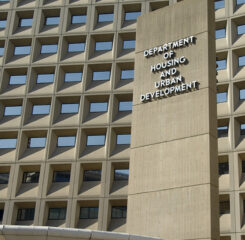Eviction Prevention Resources for HUD-Assisted Housing
After multiple extensions, the federal eviction moratorium for non-payment of rent is set to expire on June 30, with an expected one-month extension until July 31. The sunset date will remove housing protections for qualifying renters, except where covered by additional state or local eviction protections.
According to a Center on Budget and Policy Priorities (CBPP) analysis of Census Bureau data, roughly 14% of adult renters owe rent payments to their housing provider (an estimated 10.5 million renters). The data was collected through a household pulse survey collected between May 12 and June 7.
Disparities in Housing Cost Burdens
A deeper look at the data shows racial and ethnic disparities among rent burdens: The analysis showed that 24% of Black renters, 16% of Latino renters, and 15% of Asian renters said they were not caught up on rent, compared to 10% of white renters; overall, 21% of renters with children were behind on rent, compared to 10% of adults not living with someone under the age of 18. Geographic location matters, too: States in the southeast United States ranked highest in the CBPP’s backrent analysis, with Alabama’s and South Carolina’s renters topping the list at 27% and 26% behind on rent, respectively.
Looking specifically at older adults, the Census Bureau’s household pulse survey data from May 26-June 7 showed that 12% of renters aged 55 and over were not caught up on rent payments, up slightly from 11% in September. While HUD-assisted older adult renters have the opportunity to adjust their rent payments if they lose earned income, housing-unassisted seniors and older adults served by the Low-Income Housing Tax Credit (LIHTC) program do not have the ability to lower their rent payments during a financial crisis.
Separately, the Eviction Lab at Princeton University has published the first ever dataset of evictions in America, going back to 2000. The team has made national eviction data publicly available and accessible, and has tracked weekly eviction filings in 5 states and 29 cities during the pandemic.
Eviction Prevention Options for Housing Providers and Residents
Emergency Rental Assistance
The Treasury Department’s Emergency Rental Assistance (ERA) program offers financial support to cover outstanding back rent and future rent payments, as well as unmet utility and internet costs. The ERA was authorized in December 2020 and received additional funds from Congress in March 2021. HUD-assisted renters are eligible for the assistance funds to help cover the tenant portion of the rent.
While the ERA is a federal program overseen by the Treasury Department, the funds and application process are administered locally. Many state and localities have experienced delays in making the funds available to eligible renters, and applicants have reported delays in the enrollment process.
A list of ERA programs and information is available here.
Resident Information
In June, HUD published a resident brochure titled “Addressing Tenant Concerns During the COVID-19 National Emergency.” The brochure describes resident rights under the CDC’s eviction moratorium while emphasizing the fact that rent is still due.
The brochure also details various options for residents who are having trouble paying rent. Options described in the brochure include:
- interim income recertifications for HUD-assisted residents who have lost income;
- Alternative signature processes for residents who are concerned about in-person contact during the pandemic; and
- Contact information for residents with questions or concerns about their housing stability or housing conditions.
The brochure also describes the termination process for non-payment of rent once the eviction moratorium expires, which includes a 30-day termination notice (or more if required by state or local law). The brochure is available here.
Repayment Agreements
Where residents have fallen behind on rent, HUD has encouraged housing providers to enter into rent repayment plans. Chapter 8 of HUD’s occupancy handbook (4350.3) outlines tenant repayment options. Tenants can repay outstanding rent balances in a lump sum, through a repayment agreement, or through a combination.
To establish a repayment plan, both the tenant and the owner need to agree to the terms of the agreement. The monthly payment has to be affordable to the household, meaning that the monthly payment plus the tenant’s regular rent contribution should not exceed 40% of their monthly adjusted income; the length of the repayment plan is determined by how much is owed divided by the payment affordability limit.
HUD has also published a COVID-19 tenant guide on repayment plans; the guide includes a sample repayment agreement and a sample email/letter script that a resident can send to their housing provider requesting repayment options.

Most Recommended
October 15, 2025
 Shutdown Week Three: Impact of Ongoing Closure on Affordable Housing
Shutdown Week Three: Impact of Ongoing Closure on Affordable Housing
December 10, 2025
Fiscal Year (FY) Funding 2026
October 07, 2025
Immigrant Workforce Matching Program Brings Workforce Relief
Recently Added
December 19, 2025
House Moves Forward on Affordable Housing Reforms
December 19, 2025
White House Cannabis EO Paves Way for Research, Access
December 19, 2025
LeadingAge Urges DHS to Maintain "Public Charge" Guardrails
December 18, 2025



